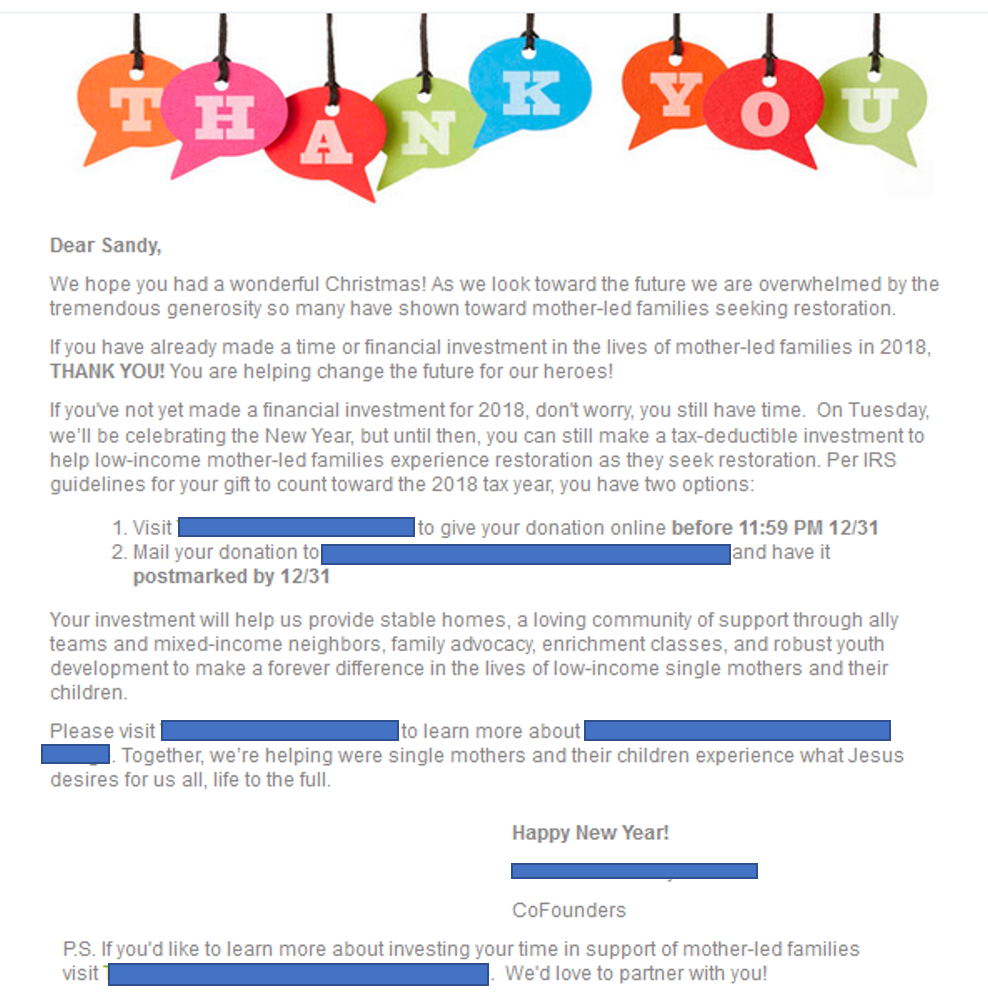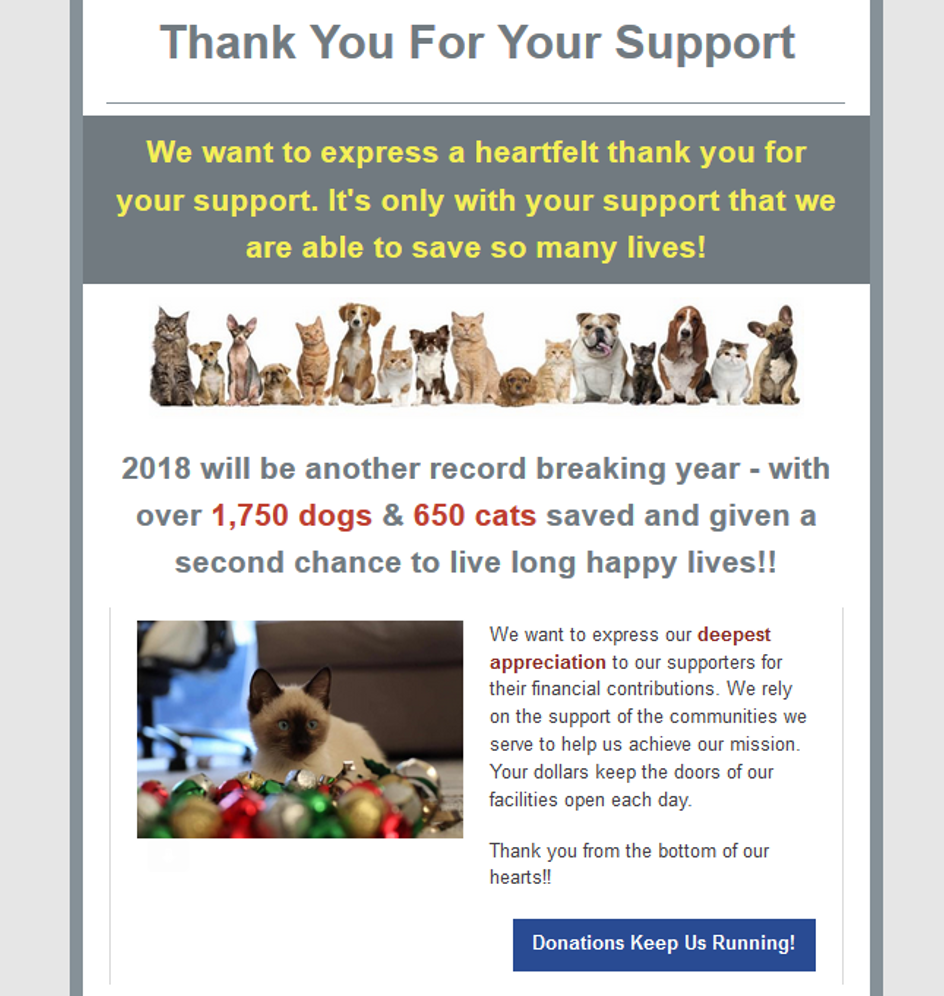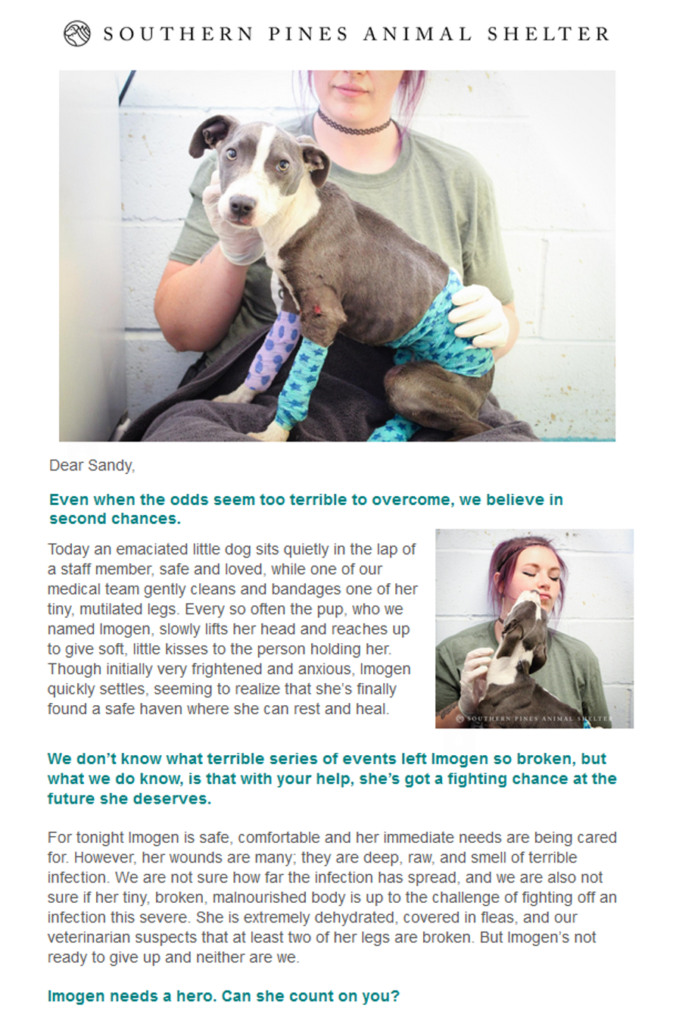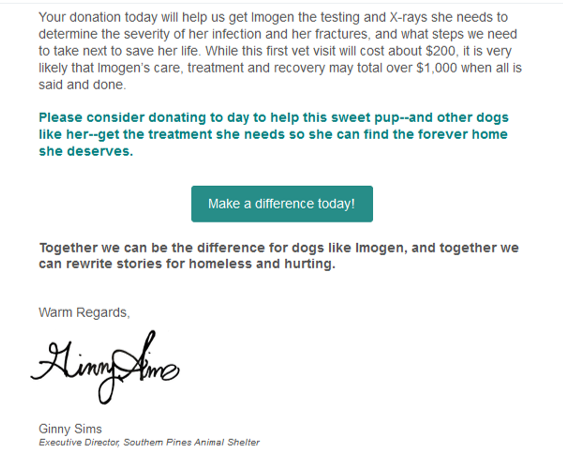
Words are everything in fundraising. Your success is found in the strength of your nonprofit storytelling.
The way you tell your story and engage people in your message can make or break your fundraising efforts.
Again, words matter.
You’ve probably heard this already – that storytelling is important. But do you really understand it?
What do we mean by storytelling? And how do you tell a good story?
At its most basic level, storytelling is a way to convey facts, information, history and experience from one person, the teller, to another, the listener, but it goes deeper than that.
Stories are interactive, bonding.
Shared stories can tie whole cultures and groups together. Shared stories bind all sorts of people, from families to religious groups. Your best friend is your best friend because there are a few stories only the two of you share.
In the nonprofit sector, stories are one of the strongest ways to make emotional connections between donors and charities.
Nonprofit storytelling lets donors and volunteers know that they are making an impact and making life better for real people.
In other words, you are letting your donor know that she is part of your story and most importantly part of the beneficiary’s story.
So, what does it look like to use storytelling in fundraising, especially when it’s done well?
Why is Storytelling an Effective Tactic for Fundraising?
Nonprofit storytelling is effective for increasing funding and engagement for several reasons.
What’s Your Nonprofit’s Story?
Nonprofit storytelling is so important to your fundraising that you need to spend the time to practice and get it right.
First of all, what is your story?
Your story is what you say about the lives you change and why it’s important. And it’s based on what your donors are interested in, which is not necessarily the same as what you want to tell them.
- Your story is not your mission statement. It’s your mission statement in action. It’s what happens at the end of the day when your nonprofit is doing what it was created to do.
- Your story is about how your nonprofit changes lives. Your story includes who you help, and most importantly, WHY you do it. It’s the endgame for you AND for the donor. If someone asks you why you put so much work and energy into your nonprofit, this is the story that answers that question.

To tell your nonprofit story well, put the audience first. This is not about what you want supporters to know; it’s not about the trials and tribulations of an average day at your organization.
The donor may have some interest in how you run your nonprofit day to day, but by and large she cares about the end result. Did her donation of time or money help someone? Was there a measurable impact? Is someone better off today because of the donation the donor made?
Don’t just tell the story of how many dogs your nonprofit rescued. Illustrate your nonprofit in action by telling the story of one dog whose adoption made a real impact in the life of a special needs child or the dog that rescued an elderly man from loneliness.
You may want to spend some time on the front lines of your nonprofit gathering stories and creating a story library so you have several ready when you need them. Be sure to either get permission to tell the story or change the names and pertinent details to protect privacy.
Whatever story you tell, include the pieces that are most compelling. Emotional impact is where the rubber meets the road and causes people to reach for their wallet.
What Makes for Compelling Nonprofit Storytelling?
Once you’ve identified a story that exemplifies your nonprofit at its best, the question is how to tell it.
Learn to tell your story in a way that really affects your donors, tugs at their heart strings, keeps them on board, and even inspires them to give more. When you get really good at this, you’ll find fundraising gets a lot easier because you can motivate people to give every time you ask.
There are a lot of resources to help you write a compelling story for your nonprofit. But there are few things you can keep in mind every time you tell your story.
Good (and Bad) Examples of Nonprofit Storytelling
If you’re like most, a good example can give you the practical ideas you need. So, here are some examples of nonprofit storytelling that you can use for ideas and inspiration when you’re working on your own stories.
As you read, take note of what you personally respond to. Good stories use adjectives and vivid descriptions of people, places, and things. They include concrete details so that the listener can empathize with the beneficiary. A good story includes an emotional angle. A bad story uses lots of insider language, jargon and “we.”
Example #1. Year-end appeal
Here’s an example of a year-end ask that could be much stronger. Notice that the image at the top makes you think this is a thank-you note, maybe a year-end thank you. There’s no emotional hook in the beginning and the emotion doesn’t come until the end where it’s muddied by lots of jargon. It’s possible that the organization’s loyal donors might read and give to this, but people who are new or not solidly connected to the nonprofit might not take the time to read it, or skim through the opening and delete the email thinking it’s a thank-you.

Example #2: Year-end appeal
Here’s another year-end email appeal that is very confusing – is it a thank-you or a request for money? It needs to be one or the other. If you’re asking for money, DON’T start with Thank You. If it’s a thank-you, DON’T ask for money or anything else.
While this does tell us that it was a record-breaking year, we have no context for the numbers. How much of an increase is that? Regardless, the numbers aren’t inspiring. We need a story about one cat or dog that was saved and why it matters that they were saved.
What would YOU think if you received this?

Example #3: Email appeal
Here’s a GREAT example of an appeal that uses storytelling to grab the reader’s attention and hold it all the way through. Notice how the appeal opens with a photo and a story that is so vivid you can imagine it clearly in your mind.


Example #4: Email appeal
Here’s another great example from CMMB (Catholic Medical Mission Board). Notice the extensive use of photos and the words from the beneficiary herself. Also notice how it’s all connected back to the reader toward the end with “When you turn on the faucet…” and how that makes you feel.


The power of an effective story
You don’t have to provide life-saving services to tell a good story.
Here’s a great example of a reframe that beautifully illustrates how the right words can make all the difference. Thanks to Jerry Panas and the Institute for Charitable Giving for sharing it a while back.
“There was a blind man who sat down on a sidewalk beside a beautiful city park to beg from those who passed by. It was a lovely day in early May.
On a piece of cardboard, he crudely wrote in chalk, ‘I’m blind. Please help me.’ He set his hat in front of him. By noon, he had collected only a few pennies.
A businessman, walking to lunch, peered at the meager offering the blind man had received. The businessman stopped long enough to write another chalk message on the backside of the cardboard sign, and then continued on his way.
The blind man held the new message for others to see. Then something strange happened. The blind man’s hat quickly filled. After lunch, the businessman returned and remarked on the difference.
‘What did you write on my sign?’ asked the blind man.
‘The same thing you wrote,’ replied the stranger, ‘but with a few different words.’”
What did the businessman write?
IT’S SPRINGTIME AND I WON’T BE ABLE TO SEE IT.
The Bottom Line
Using the right words when you talk about the work your nonprofit does can dramatically increase results you get when you’re fundraising.
The right story can grab donors by the heart and inspire them to give.
What stories can you tell about the work your nonprofit does that will paint a vivid picture in your reader’s mind’s eye AND motivate them to get involved with your organization?
Keep practicing and refining your technique. Once you get really good at nonprofit storytelling, fundraising will get easier and you’ll raise more money, which means you can make a bigger difference in the world.
And THAT’S what we’re here for.






A great read with a lot of usable information – thank you. Sharing this with my readers at Society for Nonprofits.
Thanks Jason!! We appreciate the share.
Thanks Sandy Rees for sharing this great information
You’re welcome Justin!
[…] action-packed ad that lasts only 10-seconds, look at creating 20-30 second ads that are engaging, tell your story, and connect with your […]
[…] is another communication donors love to receive: a moving story that reminds them why they supported your work in the first place. A story does not have to be […]
I respect everything that you have written in this blog. Please continue to provide wisdom to more people like me.
great information thanks a lot